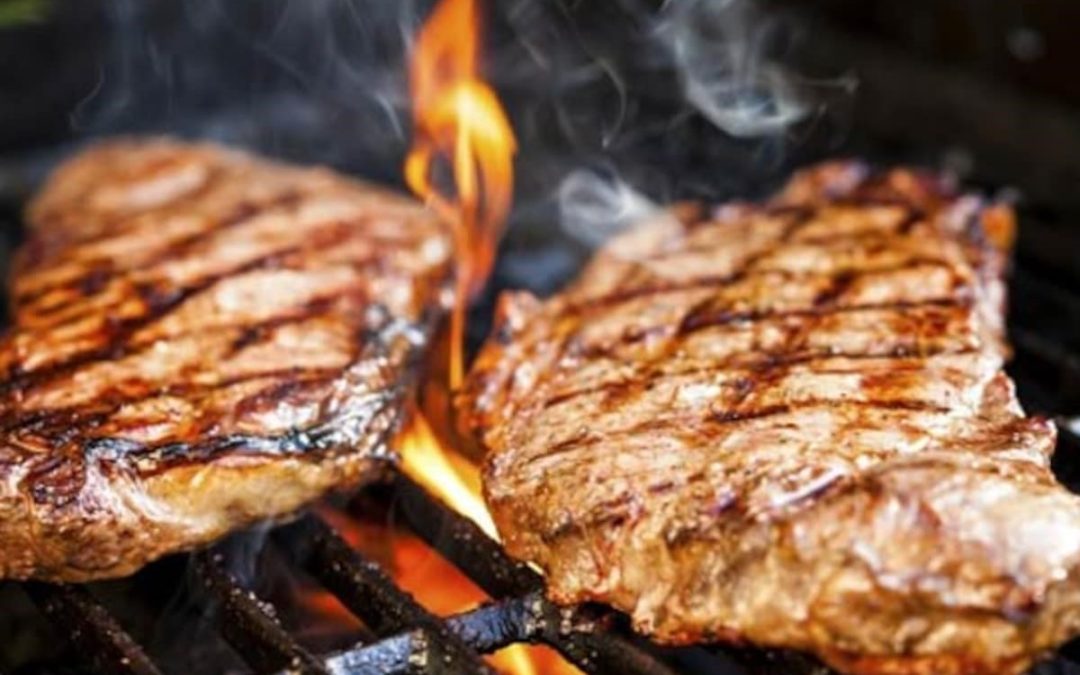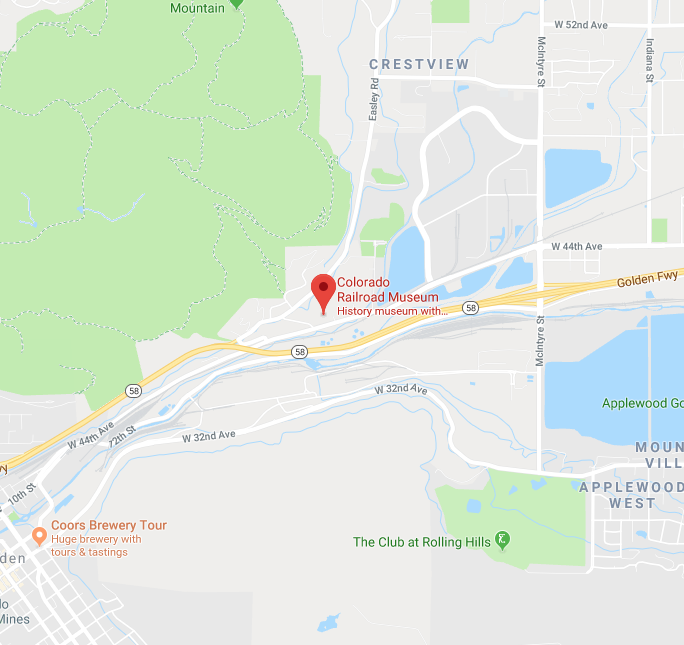As the heat of the summer continues, we decided to feature barbeque for this month’s blog post. The Union Pacific even had their own recipe for barbeque sauce, which we share with you, below.
Before we share the recipe, though, we wanted to talk about the history of barbeque sauce and a barbeque riot that happened at Denver’s National Stock Grower’s convention.
The history of barbeque sauce is a long and storied one going back to 1698 in a Dominican missionary where lime juice and pepper was used to flavor meat. Cooking meat over an open flame, one definition of barbequing, goes back nearly 1 million years ago, to the days of Homo erectus. However, different variations of barbeque sauce, using vinegar, pepper, salt, and mustard, would not emerge until the 18th and 19th centuries. It wasn’t until the 20th century that commercial barbeque sauces were introduced, and those were more savory-sweet mixes including ketchup, sugar, and Worcestershire sauce.
The Denver National Stock Grower’s convention, predecessor to the National Western Stock Show, was held for the first time in January of 1898 at the Union Pacific stockyard. The event was promoted in many Colorado newspapers attempting to showcase agriculture as a good source of revenue for the state.
The end of the three-day stock show was to be celebrated with a large barbeque to feed 12,000 people and utilize 200 servers. Menu items included bear, antelope, elk, beef, and steer to list just a few. However, instead of 12,000 people there were 25,000-30,000 attendees, and as a result, nowhere near enough food. Apparently the Chicago, Burlington & Quincy was running on a specialized schedule, dropping passengers off at the stockyards every fifteen minutes from Union Station. Before any of the food could be served, a mob of people surged forward and a riot ensued. Newspaper accounts of the event disagree on whether the mob was “good-natured” or violent, but accounts do agree that none of the actual delegates of the convention were able to partake in the barbeque, and instead that throngs of visitors stole not only all the food, but also silverware, dishes, and barrels of beer.
Despite the barbeque riot ending the convention, the convention was still considered a success and the next convention was held in the same place and same time the next year.
Whether you try the Union Pacific barbeque sauce recipe listed below, or enjoy the rest of your summer with any barbeques, we certainly hope there are no riots for you! As always, if you do try this recipe, please let us know on our social media or in the comments below how it turned out.
Union Pacific Barbeque Sauce (circa 1940s)
1 28-oz. can crushed tomatoes
4 cups beef consommé
1 28-oz. can tomato puree
4 Tbsp. sugar
4 Tbsp. Worcestershire sauce
4 tsp. chili powder
Juice of 4 lemons
½ cup wine vinegar
½ tsp. cayenne
4 tsp. black pepper
2 large onions, chopped
1 clove garlic, chopped
2 bay leaves
½ tsp. Tabasco sauce
½ lb. butter
4 tsp. dry mustard
Tbsp. Accent
4 tsp. salt
Instructions: In a saucepan, combine all ingredients. Bring to a boil, cover, reduce heat to low, and simmer for 1 hour. Strain through a coarse sieve before using. Refrigerate for no more than one week.
Recipe copied from Dining By Rail by James Porterfield.
1 Comment
Trackbacks/Pingbacks
- Birth of the National Live Stock Association and a BBQ for the ages - Mere Moonshine - […] Colorado Railroad Museum. “Dining on the Rails August 2022: Barbeque.” August 10, 2022. https://coloradorailroadmuseum.org/2022/08/10/dining-on-the-rails-august-2022-barbeque/ […]
Submit a Comment
Past Dining on the Rails Posts:
Dining on the Rails July 2022: Mountain Trout
Dining on the Rails June 2022: Eat like a Hobo!
Dining on the Rails: May 2022 – Mother’s Day Shirred Eggs
Dining on the Rails: April 2022 – How about a nice Old Fashioned?
Dining on the Rails: March 2022 – French Toast, Anyone?
Dining on the Rails: February 2022 – A Chocolatey Valentine’s Treat!
Dining on the Rails: January 2022 – Western Pacific Pork Tenderloin
Dining on the Rails: December 2021 – Cranberry Sauce
Dining on the Rails: November 2021 – Oyster Stuffing!
Dining on the Rails: October 2021 – Chicken Pot Pie
Dining on the Rails: September 2021 – Chili
Dining on the Rails: August 2021 – Pullman “Tom Collins” Cocktail
Dining on the Rails: June – How about a salad?
Dining on the Rails – Atchison, Topeka & Santa Fe Ham!
Dining on the Rails: CRI&P’s New England Boiled Dinner
Dining on the Rails: A Sweet Treat for your Valentine!
Dining on the Rails: Black Eyed Peas!
Dining on the Rails: Eggnog
Dining on the Rails: Happy Thanksgiving!
Dining on the Rails: Union Pacific Apple Pie
Dining on the Rails, August 2020
Dining on the Rails, July 2020
Dining on the Rails, June 14, 2020
Dining on the Rails, June 7, 2020
Dining on the Rails, May 31, 2020
Dining on the Rails, May 24, 2020
Dining on the Rails, May 17, 2020
Dining on the Rails, May 10, 2020
Dining on the Rails, May 3, 2020
Dining on the Rails, April 26, 2020
Dining on the Rails, April 19, 2020
Dining on the Rails, April 12, 2020








yum yum